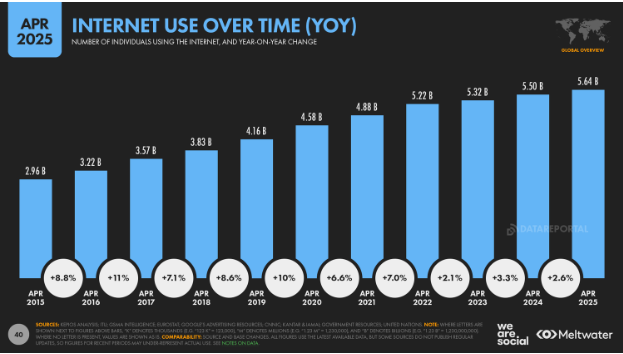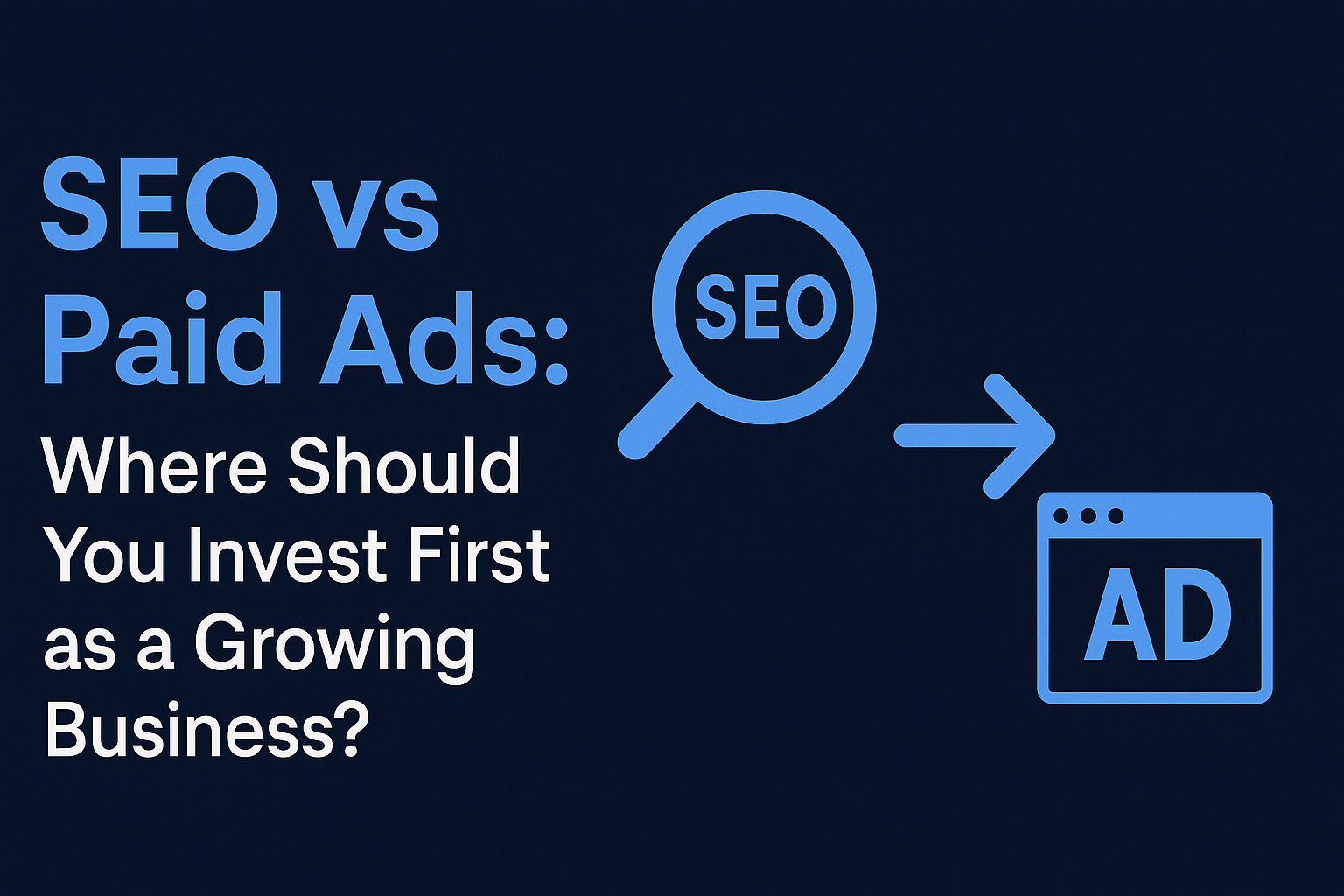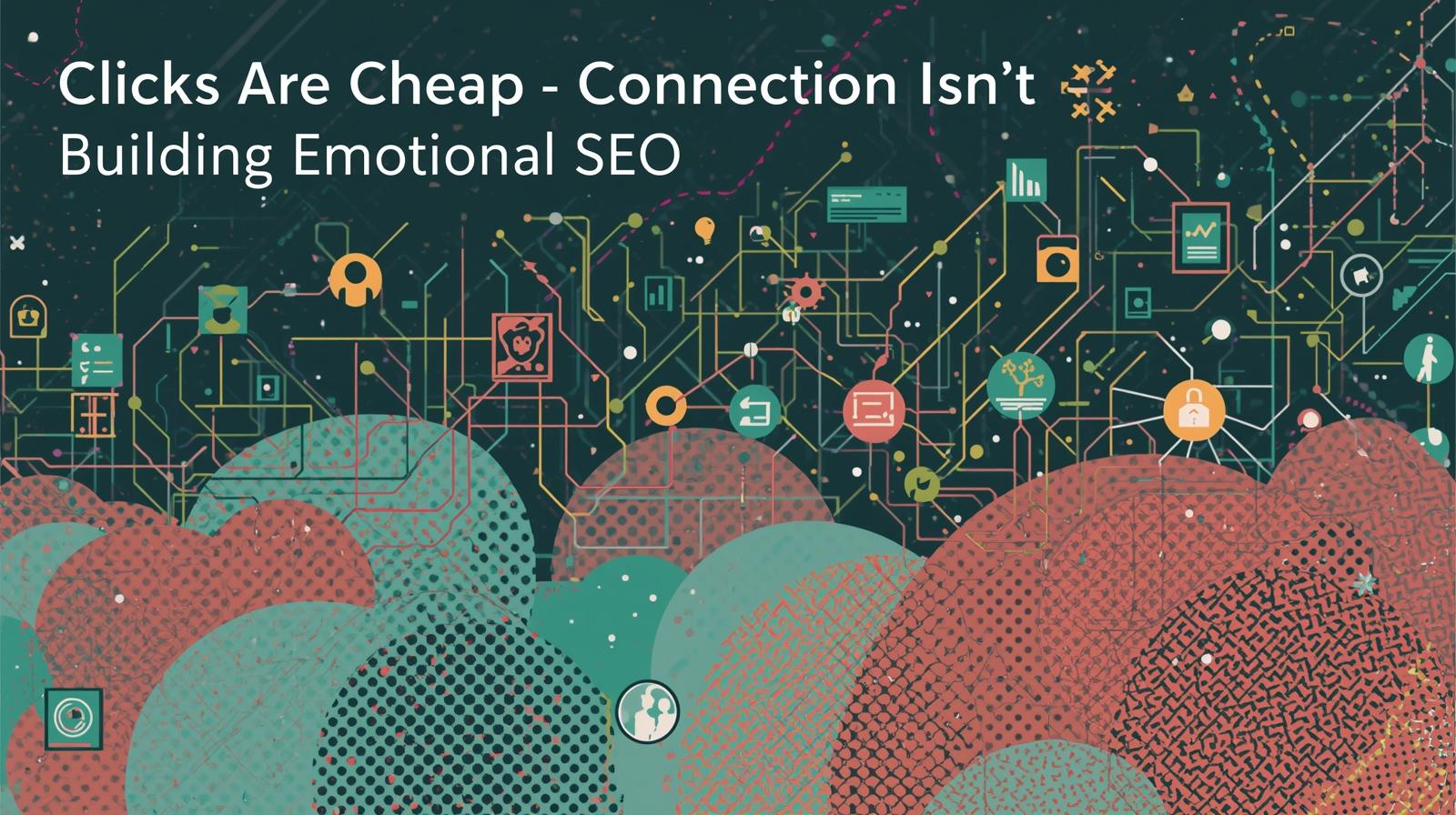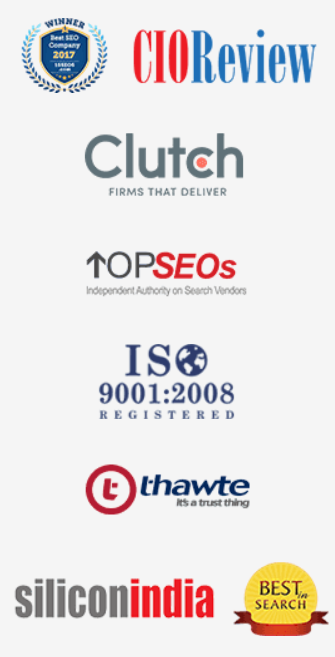By the beginning of 2025, approximately 5.56 billion people worldwide were using the Internet, representing 67.9% of the global population. The number of internet users is growing with a year-on-year increase of 2.6%. Since businesses need to widen their reach day by day, they can’t ignore these numbers. That’s why they explore digital marketing strategies that can help their business grow more; however, deciding to invest between SEO vs Paid Ads keeps them puzzled.

Both have their own flows and benefits, and both are essential for businesses, especially when your customers are online looking for services, products, and information like what you are providing.
So, where Should You Invest First as a Growing Business: SEO vs Paid Ads? If you’re puzzled too and looking for the right answer, this article can help you decide. Just go through it and make a good decision, and if you need help, VerveOnlineMarketing is here for you.
Let’s understand SEO and Paid Ads First.
What is SEO?
SEO, which stands for Search Engine Optimisation, is a process of bringing more and more visitors organically to the website. It can be achieved with strategies like:
- Keyword Research: Discover high-value search terms that align with your audience’s intent.
- Website Audit: Evaluate site performance, structure, and SEO health to spot growth opportunities.
- Content Writing: Craft engaging, keyword-optimised content that resonates and ranks.
- On-Page SEO: Optimise individual pages for search engines through meta tags, headers, and content tweaks.
- Off-Page SEO: Build authority and trust through backlinks, social signals, and outreach strategies.
- Local SEO: Enhance visibility in local search with geo-targeted keywords and Google Business optimisation.
- Technical SEO: Ensure search engine accessibility by improving site speed, crawlability, and structured data.
- Report Analysis: Decode SEO metrics to refine strategy and measure growth over time.
These strategies help website owners or businesses to gain visitors from Search Engines, other high-ranking websites, forums, or profiles. These strategies and work are managed by SEO professionals.
People consider it free, but it is only free when you, the business owner, do it for their websites; otherwise, you have to pay for in-house or outsourced teams or freelancers.
What are Paid Ads?
Placing advertisements to sell services, products, information, or to get data and leads is part of Paid Ads campaigns. These ads get posted on Google Ads, Meta Ads, X Ads, etc. Businesses pay based on Clicks (CPC), Impressions (CPM), and Conversions (CPA). These may include one or more from the list below:
- Search Engine Marketing (SEM): This includes ads that appear on search engine results pages (SERPs) like Google, often using a pay-per-click (PPC) model.
- Social Media Marketing: Ads on platforms like Facebook, Instagram, Twitter, and LinkedIn that target specific user demographics and interests.
- Display Advertising: Ads that appear on websites and apps in the form of banners, images, or videos.
- Native Advertising: Ads that blend in with the surrounding content of a website or platform, making them appear less like traditional ads.
- Video Advertising: Ads in the form of videos, often shown on platforms like YouTube or within other video content.
Paid advertising campaigns are typically handled by a variety of professionals, including advertising agencies, ad specialists, and advertising directors. These professionals work on different aspects of the campaign, from strategy and creation to implementation and management.
SEO vs Paid Ads: Head-to-Head Comparison
Now you know SEO and Paid Ads, so let’s compare these two essential strategies of digital marketing without wasting your valuable time.
Here’s a comparison table between SEO and Paid Ads
| Feature / Strategy | SEO (Search Engine Optimisation) | Paid Ads |
|---|---|---|
| Visibility Time | Slow (3 – 6 months to see significant results) | Instant (shows up as soon as the budget is activated) |
| Cost | Time & effort-based, with long-term ROI | Budget-dependent (Pay-per-click or CPM) |
| Sustainability | Long-lasting benefits compound over time | Stops immediately when you stop paying |
| Trust Factor | High – Users trust organic rankings | Lower – Marked as “Sponsored”, may be overlooked |
| Ideal For | Long-term brand growth, authority building | Short-term conversions, launches, promotions |
| Analytics | Keyword tracking, SERP rankings, and backlink audits | Real-time metrics, A/B testing, conversion tracking |
| User Intent | Captures informational & transactional intent | Often targets transactional intent directly |
| Learning Curve | Steeper – Requires SEO knowledge & ongoing updates | Moderate – Platform-specific learning (e.g., ad setup) |
| Content Dependency | Heavily dependent – Quality content drives success | Less reliant – Copywriting matters more |
| Traffic Quality | Typically more engaged – Organic users seek info | Can vary – Depends on targeting & ad quality |
| Speed of Feedback | Slow – SEO adjustments take time to show effect | Fast – Immediate response to changes & experiments |
| Placement Control | Limited – Determined by algorithms | Full control over where & when ads appear |
Choosing the Right Digital Strategy: Paid Ads vs SEO
It’s time to explore where to invest first as your business grows: SEO vs Paid Ads.
When to Choose Paid Ads First
Opting for paid ads is a smart move when immediate visibility and quick results are critical. If you’ve just launched your business, paid advertising offers a fast track to building awareness and attracting traffic while your organic reach is still maturing.
It’s especially effective for promoting limited-time offers or seasonal sales where urgency plays a role. In highly competitive markets, paid campaigns help generate leads rapidly and carve out your initial position.
They’re also a great choice when testing new products or landing pages, as ads allow you to gather insights quickly without waiting for organic rankings. And if your website is still in its early stages or lacks SEO structure, ads can temporarily fill that gap.
Additionally, paid ads serve as a powerful front-end strategy while you build a long-term SEO foundation in the background.
When to Choose SEO First
SEO is the path to long-term, sustainable traffic growth and digital credibility. According to SE Ranking, organic search results account for 58% of all website traffic. If your goal is to build organic visibility that compounds over time, especially through valuable blog-style or informational content, then SEO should come first.
It positions you as a trusted source in your niche and supports thought leadership efforts. Targeting evergreen keywords helps you maintain consistent visibility without constantly refreshing campaigns. SEO also makes sense when you’re working with a tighter budget but are willing to invest time into content creation and optimisation.
Over time, this approach builds authority and reduces reliance on paid efforts.
Think of SEO like compounding interest; it requires patience but delivers enduring returns that can benefit your brand for years.
Businesses should use a Mixed Approach
Now, the main part, it is 2025, the most forward-thinking businesses no longer see SEO and paid advertising as competing strategies. Instead of asking which one they should invest in first, they ask a more strategic question: “When and how should we use both?”
This shift reflects a deeper understanding of the digital landscape, where synergy between short-term results and long-term growth is not only possible but essential.
Smart businesses begin by leveraging paid advertising to generate immediate traction. Ads provide a direct line to visibility, leads, and conversions, especially crucial for startups and growing companies that need quick wins to gain momentum.
Paid campaigns can also be finely tuned to specific demographics and behaviours, ensuring that marketing budgets are spent effectively. However, relying solely on paid ads is unsustainable in the long run, which is why businesses simultaneously nurture their organic presence through SEO.
SEO serves as the foundation for long-term digital credibility. By optimising content for search engines, brands build lasting visibility, establish authority in their niche, and earn trust from audiences who discover them organically.
It’s a slower process compared to paid ads, but its compounding effect on visibility and brand strength pays dividends over time. A well-ranked page continues to attract traffic long after it’s published, without ongoing ad spend.
The smartest companies in 2025 use performance data from paid campaigns to refine their SEO checklist and strategies. When a particular ad copy or keyword results in strong engagement, it signals an opportunity to incorporate those insights into blog posts, landing pages, or product descriptions. This feedback loop enhances keyword targeting and ensures content is aligned with actual user interests and behaviours.
Additionally, paid ads are cleverly deployed to retarget SEO-generated traffic. Visitors who discovered a brand organically can be re-engaged with tailored ad messaging, increasing the likelihood of conversion. Retargeting capitalises on the familiarity built through SEO while using paid ads to nudge users toward action.
This mixed approach, quick wins through ads and sustainable growth through SEO, allows businesses to thrive in both the present and the future. It’s no longer about choosing one over the other, but about orchestrating both to work in harmony.
Conclusion
I hope this article would have helped you decide where you should invest first. For a long-term result businesses should consider and implement mixed approach. The mixed approach will help you achieve business goals and stay on top of competition.
Whether you are looking for SEO or Paid Ads, you should consider a reputable digital marketing company or team. If you are looking for one such agency feel free to contact VerveOnlineMarketing. It is Jaipur based agency that has been offering various digital marketing services for decades. So, contact us now and move ahead towards your business goals.
Frequently Asked Questions
Does SEO help in paid advertising?
Yes, SEO enhances paid advertising by improving landing page quality, boosting ad relevance, and lowering cost-per-click. It also provides keyword insights that can refine PPC targeting and messaging. Together, they increase visibility and conversion potential across search results.
What businesses need SEO most?
Local service providers (like dentists, electricians, and restaurants), e-commerce brands, real estate firms, and professional services benefit most from SEO. These industries rely heavily on search visibility to attract nearby or niche audiences actively looking for their offerings.
Is SEO worth it anymore?
Absolutely. Despite AI changes and evolving search behaviour, SEO remains a high-ROI strategy. It builds long-term visibility, credibility, and organic traffic without ongoing ad spend. Businesses that invest in helpful, user-focused content continue to see strong results. For explained answer, check this blog: SEO Isn’t Dead; You Just Need a Better Strategy.
How can SEO and PPC work together?
SEO and PPC complement each other by sharing keyword data, retargeting organic visitors with ads, and dominating both paid and organic SERP space. PPC offers quick wins while SEO builds sustainable traffic. Together, they create a full-funnel strategy that maximises reach and ROI.
Is SEO better than paid advertising?
It depends on your goals. SEO is better for long-term growth, trust-building, and cost efficiency. Paid ads are ideal for immediate visibility and time-sensitive campaigns. A balanced approach often works best, using SEO for stability and PPC for speed.






